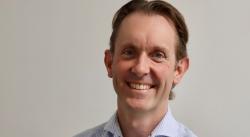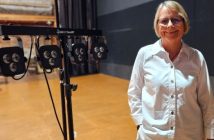The changing face of technology has turbo-charged Cambridge practice True Alignment Orthodontics.
Owner Vernon Kruger likens the advances, including 3D printing and computer modelling, to changing from horse and cart to EV motor cars.
It gives him the capacity to further develop his three-decade-plus long approach to orthodontics that sees him growing jaws rather than just straightening teeth.
It has also seen the practice, formerly Growth Orthodontics, renamed as True Alignment Orthodontics.
The advances have been made on several fronts, from the materials available for teeth alignment to 3D scanning and computer modelling.
“We now take 3D scans of people’s mouths. That 3D scan is converted into a 3D model on the computer, and all the orthodontic treatment that we as orthodontists see in our head and what we would like to achieve, we can do on the computer,” Kruger says.
“We then can make aligners that wrap around the teeth and move the teeth in a very programmed manner to where we eventually want them to be.”
Kruger uses US company Invisalign’s products, but hastens to say he is growing jaws, not providing Invisalign therapy.
He says Invisalign’s 3D-printed material is elasticised and multi-layered. “I looked at this product and realised we could use it to grow jaws.”
Kruger’s philosophy of treatment has been developed since he was a dentist in the 1980s in a small town in South Africa, when he helped with children’s orthodontic needs, so they didn’t have to travel 150km to the nearest specialist.
“When I started doing orthodontics, I didn’t want to take any teeth out. As a dentist, I didn’t want to take teeth out. And we were shown how around the world, especially Europe and in some parts of America, they were growing jaws to make all the teeth fit.”
He says the benefits are multiple. As he describes it, growing jaws means teeth can align naturally and also creates more space for the tongue. Without that space, he says, the tongue tends to sit further back and down in the mouth. “The problem then is one’s airways get restricted. The body’s first reaction to an airway restriction is to push the head forward.”
Bad posture can follow, he says, along with health issues. Not only that, night time problems can occur. “At night, when you’re sleeping, should your head fall back and is not forward, as it is during the day, your airways could become obstructed.” That in turn can lead to light sleeping, intermittent snoring or even sleep apnoea, he says.
“Using this philosophy of care we’re not just going to straighten the teeth, we’re going to analyse the shape, the size and the position of the jaws, and try and correct that.
“It’s automatic that the teeth will be nice and straight afterwards.”
Patients range in age from seven to 65, and the aligners can be easily removed to eat and clean. “And then you just pop them back in again and off you go,” he says. “They’re virtually invisible.”
The new aligners, as opposed to older-style plates or braces, allows them to do far more, with more efficiency, control and reliability, he says.
A patient will be given multiple aligners, in some cases up to 100, fitting them in sequence as the teeth and jaw are slowly re-aligned.
“The skill required is knowing what needs to be done and what can be done when you design your treatment at the beginning, and then monitoring what’s going on.
Technology allows a further advantage – patients can use a device to take their own images of their mouth, using their cellphone and an app, and then share that image with the practitioner, who can advise whether it’s time to move onto the next aligner. That also allows the practitioner to keep an eye on general dental health from a distance, and reduces the number of visits a patient needs to make to the practice.
“The beauty is anybody anywhere in the world can get a scan of their mouth done.”
That sees the practice with patients in the South Island and Australia, and even one who has moved to France.
“I’m one who loves change,” Kruger says. “I love looking at new ways, new techniques, trying different things and looking at better ways of doing it.
“My vision for the future is that we’ll have many dentists able to help many more patients. I see it as a model for the future of orthodontics, much as we’re seeing the electric vehicle being the future of cars.”





